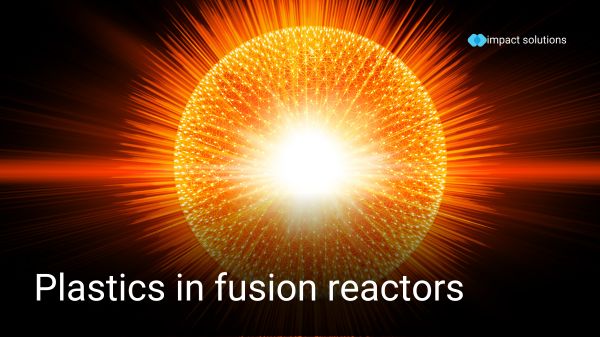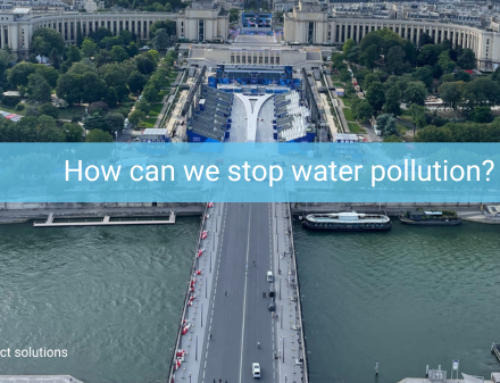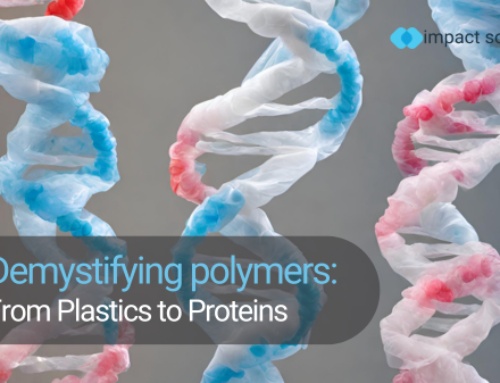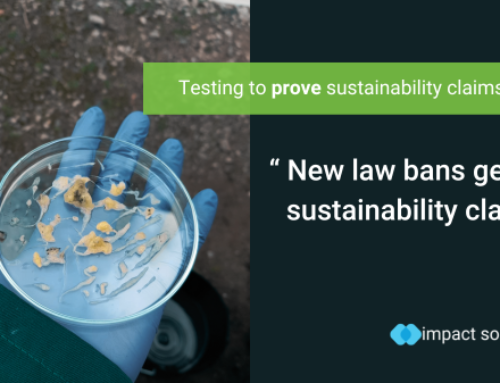Role of Plastics in Fusion Reactors – Moving Towards Sustainable Energy
The world’s population is predicted to reach 8.5 billion by 2030 and 9.7 billion by the middle of this century.1 This increase in itself places huge demands on energy production but is compounded by our need to shift towards renewable energy sources and decarbonisation of existing industrial processes, transportation, and heating.
From the latest data available, fossil fuels still accounted for 57-83% of global energy production; following a decline during the global pandemic, the economic rebound relied heavily on fossil fuel derived energy resulting in 36 billion tonnes of carbon dioxide being emitted into the atmosphere in 2021, contributing to the highest greenhouse gas emissions from energy production on record.2-5
However despite this rise, energy produced from renewable sources has increased rapidly, with a 50% increase in capacity in 2023 compared to 2022 alone, and is predicted to surpass coal-fired power generation by 2025.6,7 Alongside renewables, nuclear power has a key role in low carbon power generation, producing almost no greenhouse gas emissions during operation.8 More pertinently, nuclear energy contributes to electricity security as it is capable of reacting to the nation’s energy demand and supply fluctuations unlike solar or wind power installations. Nuclear provided approximately 10% of global energy requirements in 2018, though in many advanced economies it accounts for a much larger proportion of energy production.9 However, approximately a quarter of nuclear power stations are set to cease operation by 2025, and by two thirds by 2040, mainly due to the cost of extending the lifetime of current plants.9, 10 The scale of investment, long lead times, negative public perception, and the problems associated with safe long-term storage of spent nuclear fuel has stifled investment in new nuclear installations.9, 10 Combined with decommissioning of existing infrastructure, this risks relying on fossil fuel derived energy to meet peak demand and stabilize fluctuating supply from renewable sources. For renewable energy to offset the decline of nuclear power, the pace of adoption would need to be five times greater over the next twenty years as it already has been in the last twenty.
The problems associated with nuclear power may be overcome with recent advancements in fusion power generation. Achieving nuclear fusion would mean harnessing the power of stars, but whilst the technical difficulties in building a nuclear fusion power plant are equally astronomical, it is one of the most promising routes towards achieving clean, safe, and practicably limitless energy to meet increasing global demands. Existing fission nuclear power relies on the controlled splitting of uranium or plutonium atoms into lighter elements with subsequent release of energy. Fusion power is the opposite process, where hydrogen atoms are squeezed together to form helium atoms, again releasing energy in the process. This can only be achieved whilst simulating the conditions found at the centre of stars in the reactor, meaning heating the hydrogen fuel to 150 million degrees Celsius and at a pressure many times that of earth’s atmosphere.11-13 Despite these extreme conditions, fusion power is inherently safe as any deviation from the required conditions quickly quenches the reaction, unlike fission reactors where a nuclear meltdown can occur if not controlled. There are also no radioactive fuels or by-products from the reaction negating the costs associated with fuel handling and disposal.
Heating the fuel is achieved by firing lasers at small spherical fuel pellets a few millimetres in diameter, which are made by freezing layers of hydrogen isotopes to near absolute zero.14, 15 However, this process is slow, difficult, and expensive, and a functioning fusion reactor would require millions of pellets per day to produce sufficient energy. Researchers have now found several simplified ways of producing fuel pellets at scale where familiar polymers and plastics play a pivotal role.
How are Plastics in Fusion Reactors used?
The above process has been refined utilizing polystyrene and polyimides to encase the frozen hydrogen, simplifying handling and playing a key role in achieving a perfectly smooth and consistent target which is pivotal for the fusion process to work.16-19 However, production of sufficient numbers of fuel pellets is still difficult. Recently published research has shown a flow reactor process for continuously producing acrylate spheres into which hydrogen isotopes can be infused with the required controlled shell thickness, smoothness, and roundness required for fusion.18
More efficient methods of fuel production have been recently demonstrated where foamed polyethylene is injected with liquid hydrogen which forms the surrounding polymer sphere dynamically when blasted with laser light. This means the fuel is produced immediately prior to the fusion reaction, foregoing the expensive and slow layering process entirely.14, 20-23 The ability to continuously produce polymeric – hydrogen fuel pellets is a key step towards commercialising fusion reactors.
Polymers also play several key roles in ancillary equipment for fusion reactors, being used as the insulating material in the superconducting magnets used to contain the plasma generated in the reactor.24 Plastics in fusion reactors are also employed as conductor and cabling insulators, structural components, and thermal barriers in the reactor where they are subjected to extreme temperatures, cryogenic conditions, radiation, and mechanical loading.
The use of plastics in fusion reactors therefore promise to be a pivotal part of realising the clean and abundant energy production that fusion power promises, with the UK government aiming to have a viable fusion power plant design by 2040.10
Understanding polymer behaviour, characterizing properties and resistance to environmental effects, and predicting lifetimes of materials is pivotal to realising such engineering feats. Impact Solutions are experts in these areas and can help to provide robust data to assess material performance.
[1] United Nations. (n.d.). Population. Retrieved from https://www.un.org/en/global-issues/population
[2] Statista. (n.d.). World electricity production by energy source. Retrieved from https://www.statista.com/statistics/269811/world-electricity-production-by-energy-source/
[3] Hannah Ritchie and Pablo Rosado (2020) – “Energy Mix” Published online at OurWorldInData.org. Retrieved from: ‘https://ourworldindata.org/energy-mix’ [Online Resource]
[4] Ritchie, Hannah; Roser, Max; Rosado, Pablo (11 May 2020). “CO₂ and Greenhouse Gas Emissions”. Our World in Data. Archived from the original on 3 August 2020. Retrieved 5 September 2022.
[5] International Energy Agency. (2022, March 8). Global CO2 emissions rebounded to their highest level in history in 2021. Retrieved from https://www.iea.org/news/global-co2-emissions-rebounded-to-their-highest-level-in-history-in-2021
[6] International Energy Agency. (2024, January 11). Massive expansion of renewable power opens door to achieving global tripling goal set at COP28. Retrieved from https://www.iea.org/news/massive-expansion-of-renewable-power-opens-door-to-achieving-global-tripling-goal-set-at-cop28
[7] International Energy Agency. (2023). Electricity. In Renewables 2023. Retrieved from https://www.iea.org/reports/renewables-2023/electricity
[8] Jawerth, Nicole, “What is the Clean Energy Transition and How Does Nuclear Power Fit In?”, IAEA Bulletin, Vol. 61-3, September 2020. Retrieved from: https://www.iaea.org/bulletin/what-is-the-clean-energy-transition-and-how-does-nuclear-power-fit-in
[9] International Energy Agency. (May 2019). Nuclear Power in a Clean Energy System. Retrieved from https://www.iea.org/reports/nuclear-power-in-a-clean-energy-system
[10] Haves, Emily; “Nuclear Power in the UK”, House of Lords Library (2021, December 01). Retrieved from: https://lordslibrary.parliament.uk/nuclear-power-in-the-uk/
[11] Eurofusion. (n.d.). What is the temperature generated in a tokamak? Retrieved from https://euro-fusion.org/faq/what-is-the-temperature-generated-in-a-tokamak
[12] Eurofusion. (n.d.). Fusion under pressure. Retrieved from https://euro-fusion.org/faq/fusion-under-pressure/
[13] Lawrence Livermore National Laboratory. (n.d.). Inertial Confinement Fusion. Retrieved from https://lasers.llnl.gov/science/icf
[14] Szondy, David; (2023, July 12) “Laser Fusion Reactors could make their own fuel pellets in a flash”. Retrieved from https://newatlas.com/science/laser-fusion-reactors-could-make-their-own-fuel-pellets/
[15] Photonics Media. (July 2023). Rochester Proof of Principle Makes Fusion Targets. Retrieved from https://www.photonics.com/Articles/Rochester_Proof_of_Principle_Makes_Fusion_Targets/a69157
[16] H. F. Robey, L. Berzak Hopkins, J. L. Milovich, N. B. Meezan; The I-Raum: A new shaped hohlraum for improved inner beam propagation in indirectly-driven ICF implosions on the National Ignition Facility. Phys. Plasmas 1 January 2018; 25 (1): 012711.
[17] Knight, A. K. (2007). Analysis of the discrete stages of the formation of polyimide films by vapor deposition and their effects on the film’s properties. Vol. 68, No. 05.
[18] Valich, Lindsey; (2023, July 10). “New technique may help achieve mass production fusion energy”. Retrieved from: https://www.rochester.edu/newscenter/dynamic-shell-formation-mass-production-fusion-energy-563262/
https://doi.org/10.1103/PhysRevLett.125.065001
[19] Ross, J., Amendt, P., Atherton, L. et al. Lead (Pb) Hohlraum: Target for Inertial Fusion Energy. Sci Rep 3, 1453 (2013). https://doi.org/10.1038/srep01453
[20] Li, J., Lindley-Start, J., Porch, A. et al. Continuous and scalable polymer capsule processing for inertial fusion energy target shell fabrication using droplet microfluidics. Sci Rep 7, 6302 (2017). https://doi.org/10.1038/s41598-017-06746-3
[21] Igumenshchev, I. V., et al (2023, July). Proof-of-Principle Experiment on the Dynamic Shell Formation for Inertial Confinement Fusion. Physical Review Letters, 131(1), 015102. https://doi.org/10.1103/PhysRevLett.131.015102
[22] Goncharov, V. N., et al (2020, August). Novel Hot-Spot Ignition Designs for Inertial Confinement Fusion with Liquid-Deuterium-Tritium Spheres. Physical Review Letters, 125(6), 065001.
[23] Letts, S A, and Lucht, L M. 1986. “Preparation and properties of polymer foams for ICF targets”. United States. https://www.osti.gov/servlets/purl/6211360.
[24] Akiyama, Y., et al (2022). Study on irradiation effect of insulating materials for fusion superconducting magnets -interlaminar shear strength at liquid helium temperature-. Radiation Physics and Chemistry, 199, 110372. https://doi.org/10.1016/j.radphyschem.2022.110372
[25] https://lordslibrary.parliament.uk/nuclear-power-in-the-uk/





